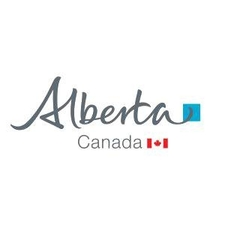ENDANGERED-SPECIES
Type of resources
Topics
Keywords
Contact for the resource
Provided by
Formats
Representation types
Update frequencies
status
-

Distribution (range) polygons were assembled by regional SARA biologists using the best available information, including COSEWIC status reports, recovery potential assessments, academic literature, and expert opinion. These spatial data support the protection, recovery and conservation of species listed as Extirpated, Endangered, Threatened or Special Concern under SARA. Species distributions are also described and displayed in Recovery Strategies, Action Plans and/or Management Plans. Discrepancies may exist between the distribution data shown in a species SARA recovery document and the current spatial data. Please contact DFO for more information on any data discrepancies. Please refer to the metadata included with the data for full entity attribute information
-

The Provincial Bison Protection Areas dataset is comprised of all the polygons that represent Bison Protection Areas in Alberta. In order to support the conservation, management and recovery of disease-free bison in northern Alberta, wood bison located within specified Wildlife Management Units (WMUs) are listed as Threatened under the Wildlife Act and Regulation. All hunting of wood bison within Northwest Bison Protection Area is regulated and based on issuance of a bison special licence and allocation processes for both Indigenous and non-Indigenous persons. All hunting (Indigenous and non-Indigenous) of wood bison within the Wabasca Bison Protection Area is prohibited. Legal descriptions of the boundaries of Provincial Bison Protection Areas can be found within Schedule 11 of the Wildlife Regulation. The boundaries within the Provincial Bison Protection Areas dataset have been interpreted from written legal descriptions within Schedule 11 of the Wildlife Regulation. In case of discrepancy between GIS data and the written legal description, the written legal description shall take precedence.
-

Critical habitat is identified for species listed as Endangered or Threatened under the federal Species at Risk Act (SARA) and where federal critical habitat protection orders are in effect. Fisheries and Oceans Canada (DFO) is the responsible authority for the protection, recovery and conservation of all listed aquatic species at risk in Canada. Critical habitat is defined as the habitat that is necessary for the survival or recovery of a listed wildlife species and that is identified as such in the recovery strategy or action plan for the species (https://www.canada.ca/en/environment-climate-change/services/species-risk-public-registry.html). SARA makes it illegal to destroy any part of the critical habitat of a listed species and may impose restrictions on development and construction. Species in this layer have federal protection of critical habitat under a Critical Habitat Order pursuant to subsections 58(4) and (5) of SARA, which brings into force the subsection 58(1) prohibition against the destruction of any part of critical habitat. This dataset delineates an area or extent in which the species and its critical habitat may be found. Exterior extent polygons are derived from the detailed data provided in DFO's Fisheries and Oceans Canada Species at Risk dataset, reproduced under the Open Government Licence - Canada. Alberta Environment and Protected Areas Fish and Wildlife Management Information System (FWMIS) Hydrology Arc and Polygons data, and a surrounding larger buffer. This dataset communicates to users the following information: the proximity of aquatic critical habitat. the prohibition against the destruction of any part of aquatic critical habitat. directs users to DFO to ensure compliance with federal legal instruments. and ensures that any activities which may result in the destruction of critical habitat are managed to the extent required under SARA. Users must consult Fisheries and Oceans Canada (Projects Near Water webpage: www.dfo-mpo.gc.ca/pnw-ppe/index-eng.html. Fisheries Protection Program: FisheriesProtection@dfo-mpo.gc.ca) in relation to the application of the Species at Risk Act and published Critical Habitat Orders (SARA Public Registry).
 Arctic SDI catalogue
Arctic SDI catalogue